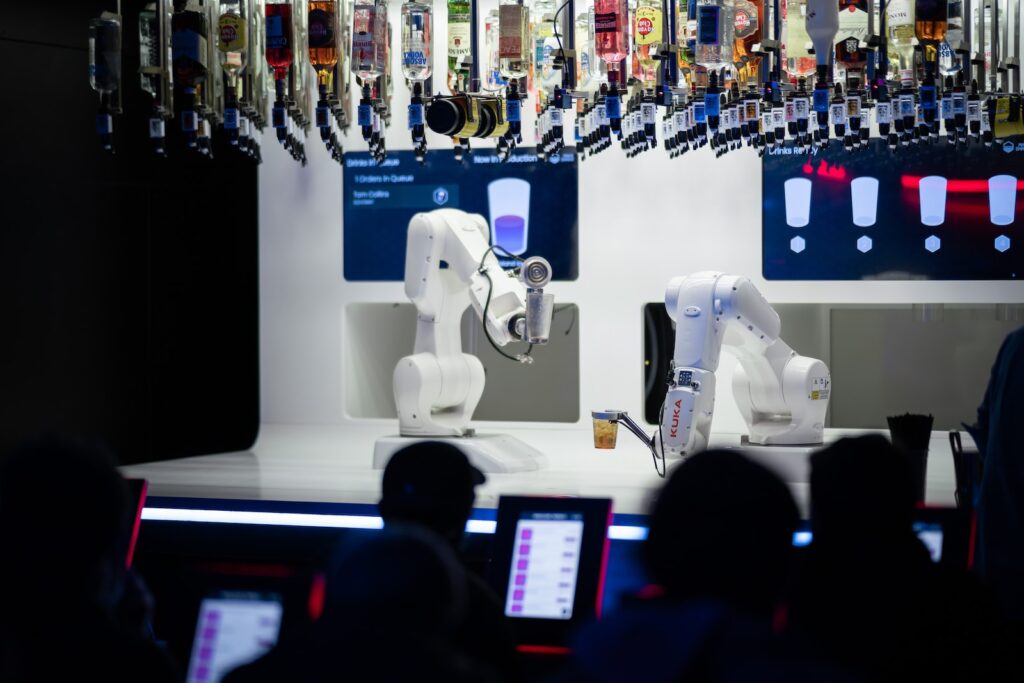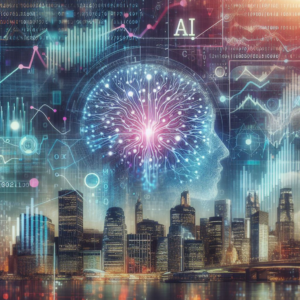

This is a question that many people have asked, especially in the era of rapid technological development and innovation. Artificial intelligence, or AI, is the ability of machines or software to perform tasks that normally require human intelligence, such as reasoning, learning, decision making, and creativity. AI has been applied to various domains, such as healthcare, education, entertainment, finance, and security, and has shown remarkable achievements and potentials.
However, does this mean that AI will eventually surpass human capabilities and take over our jobs, our lives, and our world? Will we become obsolete and irrelevant in the face of super-intelligent machines? Will we lose our sense of identity and purpose as human beings?
The answer is not so simple or straightforward. There are many factors and perspectives to consider when evaluating the impact and future of AI on humanity. In this blog post, we will explore some of the arguments for and against the idea that AI will replace human one day, and try to provide a balanced and nuanced view on this controversial topic.
How can we train AI according to our need?

Artificial intelligence (AI) is a powerful technology that can perform tasks that humans find difficult, such as recognizing faces, understanding natural language, playing games, and solving problems. However, AI is not a magic solution that can do anything we want. AI systems need to be trained with data and algorithms that reflect our goals and values. How can we train AI according to our need?
One way to train AI according to our need is to define the problem clearly and choose the appropriate data and metrics. For example, if we want to train an AI system to diagnose diseases, we need to provide it with medical records, images, symptoms, and labels of different diseases. We also need to decide how to measure the accuracy and reliability of the system, such as using precision, recall, or F1-score. By defining the problem and choosing the data and metrics carefully, we can ensure that the AI system learns what we want it to learn.
Another way to train AI according to our need is to monitor and evaluate the performance and behavior of the AI system. For example, if we want to train an AI system to generate text, we need to check if the text is coherent, relevant, original, and free of errors or biases. We also need to test the system on different scenarios and inputs, such as different topics, languages, or styles. By monitoring and evaluating the performance and behavior of the AI system, we can identify and correct any issues or limitations that may arise.
A third way to train AI according to our need is to involve human feedback and collaboration in the training process. For example, if we want to train an AI system to assist humans in decision making, we need to solicit feedback from the users and stakeholders of the system. We also need to enable collaboration between humans and AI, such as allowing humans to override or modify the AI’s suggestions or actions. By involving human feedback and collaboration in the training process, we can ensure that the AI system respects human preferences and values.
In conclusion, training AI according to our need is not a simple task that can be done automatically. It requires careful planning, monitoring, evaluation, and interaction with humans. By following these steps, we can train AI systems that are useful, reliable, ethical, and aligned with our needs.
What are some AI applications?

Artificial intelligence (AI) is a powerful technology that can perform tasks that humans find difficult, such as recognizing faces, understanding natural language, playing games, and solving problems. However, AI is not a magic solution that can do anything we want. AI systems need to be trained with data and algorithms that reflect our goals and values. What are some AI applications that we can use in our daily lives?
One AI application that we can use in our daily lives is speech recognition. Speech recognition is the ability of an AI system to understand and transcribe human speech. For example, we can use speech recognition to control our smart devices, such as asking Alexa to play music, turn on the lights, or order pizza. We can also use speech recognition to communicate with other people, such as using Google Translate to speak in different languages, or using Skype to make video calls.
Another AI application that we can use in our daily lives is image recognition. Image recognition is the ability of an AI system to identify and classify objects, faces, scenes, or emotions in images. For example, we can use image recognition to unlock our phones with face ID, tag our friends on Facebook, or filter our photos on Instagram. We can also use image recognition to enhance our security, such as using facial recognition to access restricted areas, or using license plate recognition to track vehicles.
A third AI application that we can use in our daily lives is recommendation systems. Recommendation systems are the ability of an AI system to suggest products, services, or content that match our preferences and needs. For example, we can use recommendation systems to shop online, such as using Amazon to find products that we might like, or using Netflix to watch movies or shows that we might enjoy. We can also use recommendation systems to learn new things, such as using Coursera to find courses that we might be interested in, or using Spotify to discover new music.
In conclusion, AI applications are everywhere in our daily lives. They can help us perform tasks that are tedious, difficult, or impossible for humans. However, AI applications are not perfect and they need to be trained with data and algorithms that reflect our goals and values. By understanding how AI works and how we can use it responsibly, we can benefit from its advantages and avoid its disadvantages.
How can we use AI responsibly?

Artificial intelligence (AI) is a powerful technology that can perform tasks that humans find difficult, such as recognizing faces, understanding natural language, playing games, and solving problems. However, AI is not a magic solution that can do anything we want. AI systems need to be trained with data and algorithms that reflect our goals and values. How can we use AI responsibly and avoid its potential risks and harms?

One way to use AI responsibly is to ensure its transparency and explainability. Transparency means that we can understand how an AI system works, what data it uses, and what decisions it makes. Explainability means that we can get clear and understandable reasons for the AI system’s actions and outcomes. For example, if we use an AI system to diagnose diseases, we need to know how it analyzes the medical records, images, symptoms, and labels, and why it gives a certain diagnosis. By ensuring transparency and explainability, we can trust and verify the AI system’s performance and behavior.
Another way to use AI responsibly is to ensure its fairness and accountability. Fairness means that we can avoid or minimize any biases or discrimination that may affect the AI system’s results or impact. Accountability means that we can hold the AI system and its developers or users responsible for any consequences or damages that may occur. For example, if we use an AI system to recommend products, services, or content, we need to ensure that it does not favor or exclude certain groups of people based on their gender, race, age, or other characteristics. By ensuring fairness and accountability, we can protect and respect the rights and dignity of all people.
A third way to use AI responsibly is to ensure its safety and security. Safety means that we can prevent or mitigate any errors or failures that may harm the AI system or its environment. Security means that we can protect the AI system from any attacks or threats that may compromise its integrity or functionality. For example, if we use an AI system to control our smart devices, we need to ensure that it does not malfunction or cause accidents, and that it is not hacked or manipulated by malicious actors. By ensuring safety and security, we can avoid or reduce any physical or digital harms.
In conclusion, using AI responsibly is not a trivial task that can be ignored or neglected. It requires careful planning, monitoring, evaluation, and interaction with humans. By following these steps, we can use AI systems that are transparent, fair, accountable, safe, and secure. By doing so, we can maximize the benefits and minimize the risks of AI for ourselves and others.





















